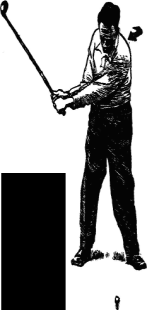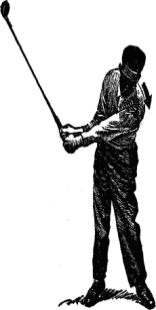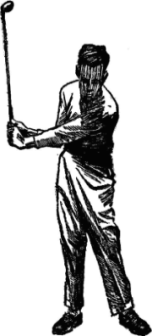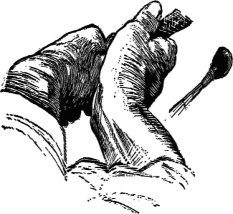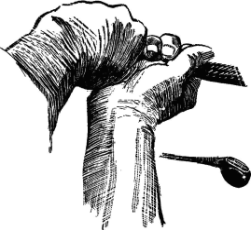| Free Golf Swing Tips, Techniques, and Golf Product Reviews! |
 |
||||||
How do you incorporate the early wrist break into the golf swing?Golf Backswing: Part 4The next step is to incorporate the early wrist break into the golf swing itself, making it a single uninterrupted motion. For this we must start with what has come to be known as the forward press, for it is with this that the backswing begins. The forward press is simply a device that gets us from the passive into the active stage smoothly, without a jerk. Standing in a stationary position, even for a few seconds, is tiring. Ask any service man who has stood at attention for any extended period. We don't pass easily from a stationary position into a big move. "The forward press provides this transition. It is the little move that leads into the big one. The trick in golf is to go from the stationary position of address to the big movement of the backswing without a jerky effort."
The forward press provides this transition. It is the little move that leads into the big one. The trick in golf is to go from the stationary position of address to the big movement of the backswing without a jerky effort. It can be done in several ways, with the right knee, with the hips, with the hands, with a turn of the hips. We want a lateral movement of the hips, no turn. It is a slight pushing of the hips to the left, laterally, about an inch or two. This press is in the opposite direction from the big move. 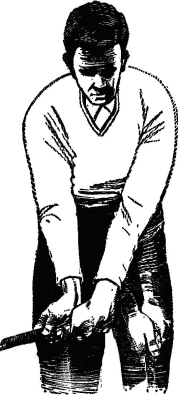 The backward break off the forward press. The "ghost" hands how position as the press is completed. The backward break begins as the hands move past the player's right leg. But as the hips come back from their little pushing motion, they keep right on sliding and go into a lateral turning motion to the right—the beginning of the backswing—and we are off. This makes for the smoothest transition of all. As the hips move to the left in the press, they pull the hands with them, just slightly, only a, fraction of an inch. When the hips come back, the hands come back-Now, as the hips and hands come back from the press, push the heel of the right hand down firmly but not sharply on the left thumb. The back of the left hand starts to turn under—and the all-important backward wrist break has begun. This move should not be a sharp or a violent action. It should be firm and steady. And it feels much quicker than it looks or actually is. The hands meanwhile are moving to the right as the wrists are cocking, and the hips are sliding into a lateral turn, taking the weight with them. Before you realize it, your hands will be waist high. And at that joint the wrist break should be completed!
Right here is the first check point: Stop the swing and look at your hands. If the wrist break has been performed correctly you will see at this point just the reverse of what you saw at the address: You should see only one knuckle of the left hand, but two knuckles of the,
You should not be able to see any of the face of the club, either. The face should be turned away from you and somewhat down, not at the 45-degree angle it was in the stationary test, but still turned away and somewhat down. You should see a definite inward bend of the left hand, a reflex angle formed by the forearm and the back of the hand. The shaft will be at about a 45-degree angle to the ground and the angle formed by the left arm and the shaft of the club will be somewhat more than a right angle, maybe 100 degrees. You should feel that the wrists cannot be broken any more. They will be, a little, at the top by the weight of the club head, but they should feel now as though the break were absolutely complete. If these check points are not all clearly visible (except the club-shaft position) exactly as we have given them, your break has been wrong. The chances are that you have pushed the heel of the right hand sideways against the left thumb, instead of down. This brings the club too sharply on an inside line, tends to open the face somewhat, and doesn't get the back of the left hand started going down under as it must. With such a break, when it is completed, you will see two knuckles of the left hand and only one of the right, just as you did at address. So correct it by starting over again and pushing down on the left thumb. That brings the back of the left hand down and under and gives you the position you must have. Part 3 of the backswing section will explain what this akward and uncomfortable series of steps does for your golf swing.
|
Recommended Golf Swing |
||||||
Subscribe to My RSS/XML Feeder |
|||||||
|
| Homepage | The Rules Of Golf Quiz | Golf Blog | Link to Us |
Copyright©
2006-20015 Golf-Swing-Magic.Com. All Rights Reserved. |
|||||||
